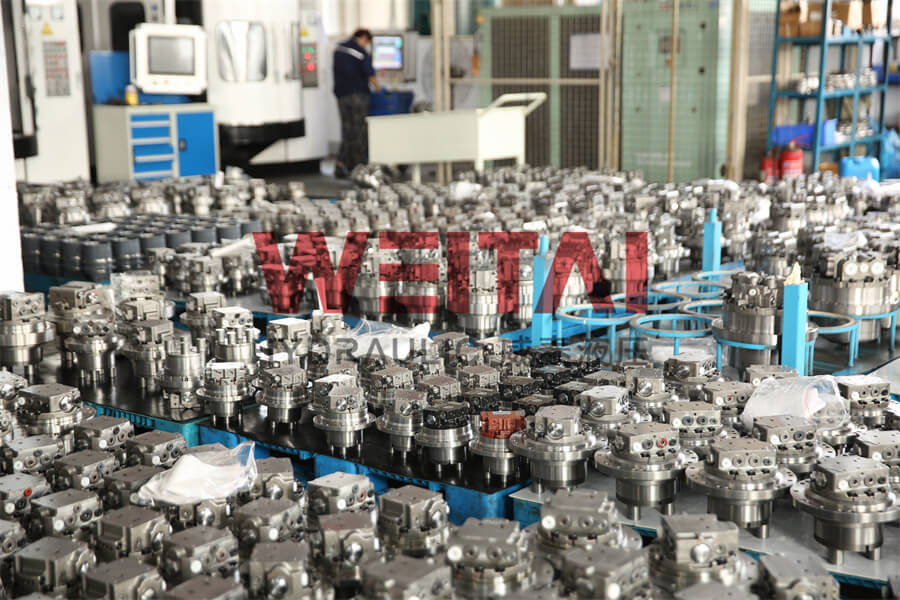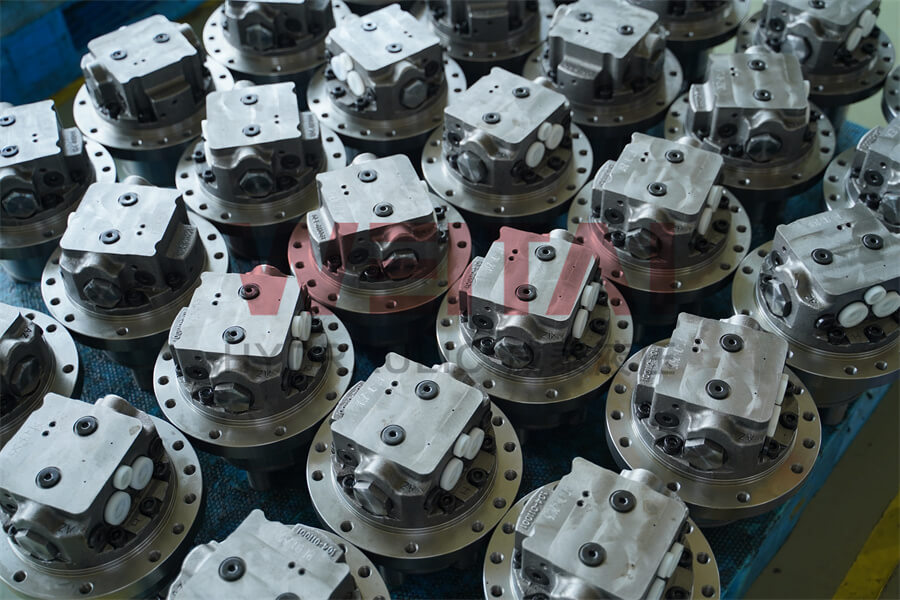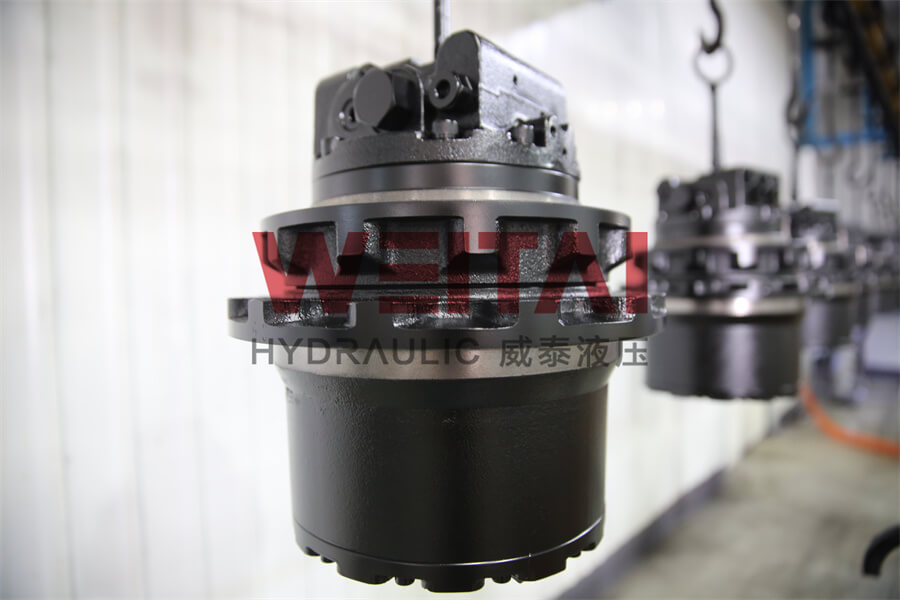Mini excavators are indispensable tools in construction, landscaping, and various other industries. One of the critical components of these machines is the final drive, which plays a crucial role in ensuring that the excavator moves and operates efficiently. However, like any mechanical component, final drives can experience issues that require troubleshooting. Understanding how to diagnose and resolve these problems can save you time, money, and downtime.
In this blog post, we’ll explore some of the most common issues that occur with mini excavator final drives and provide step-by-step troubleshooting tips to help you keep your machine running smoothly.
1. Leaking Hydraulic Fluid
Symptoms:
Visible oil stains under the machine.
Loss of hydraulic power or sluggish performance.
Causes:
Damaged seals or gaskets.
Worn-out hoses or fittings.
Overheating leading to seal failure.
Troubleshooting Steps:
Inspect the seals: Examine the seals around the final drive for any visible damage. If the seals are cracked or worn out, they need to be replaced.
Check the hoses and fittings: Look for any signs of wear, cracks, or loose connections. Tighten or replace as necessary.
Monitor operating temperature: Ensure the machine is not overheating, which can cause hydraulic fluid to break down and lead to leaks. If overheating is an issue, check the cooling system and oil levels.
2. Unusual Noise Coming from the Final Drive
Symptoms:
Grinding, clunking, or whining noises during operation.
Noise intensifies under load.
Causes:
Worn-out bearings or gears.
Low or contaminated oil.
Foreign objects in the final drive.
Troubleshooting Steps:
Check the oil level: Low oil can cause the components to grind against each other, leading to noise. Top off the oil if needed, and ensure you’re using the correct type of oil.
Inspect for contamination: Drain the oil and check for metal shavings or debris, which can indicate internal wear or damage. If contamination is present, a thorough cleaning and component inspection are required.
Examine the bearings and gears: If the noise persists after checking the oil, the bearings or gears may be worn out. In this case, disassembly may be necessary to inspect and replace the damaged components.
3. Loss of Power or Drive
Symptoms:
The machine struggles to move or is unable to climb inclines.
The final drive operates at reduced speed.
Causes:
Worn-out or damaged internal components (gears, bearings, etc.).
Hydraulic issues such as low pressure or fluid leaks.
Clogged filters or blocked hydraulic lines.
Troubleshooting Steps:
Check hydraulic pressure: Use a pressure gauge to ensure that the hydraulic system is delivering the correct pressure to the final drive. If the pressure is low, check for leaks, clogged filters, or a malfunctioning pump.
Inspect internal components: If the hydraulic system is functioning correctly, the issue may be with the internal components of the final drive. This will require disassembly and inspection of gears, bearings, and other moving parts.
Clean or replace filters: Ensure that the hydraulic filters are clean and free of debris, as clogged filters can restrict fluid flow and reduce power.
4. Final Drive Overheating
Symptoms:
The final drive becomes excessively hot to the touch.
The machine may shut down or enter a limp mode to prevent damage.
Causes:
Overloading the excavator.
Insufficient lubrication or incorrect oil type.
Blocked cooling vents or compromised cooling system.
Troubleshooting Steps:
Check the load: Ensure that the machine is not being overloaded, as this can cause the final drive to overheat. Operate within the manufacturer’s recommended limits.
Inspect lubrication: Verify that the final drive has the correct amount of oil and that it is the appropriate type for your machine. Overheating can occur if the oil level is low or the wrong oil is used.
Examine the cooling system: Clean any debris from the cooling vents and ensure that the cooling system is functioning properly. If overheating persists, the problem may lie in the internal components, requiring further inspection.
5. Final Drive Not Engaging
Symptoms:
The machine does not move when the controls are activated.
No response or delay in the drive system.
Causes:
Faulty hydraulic pump or motor.
Broken drive shaft or coupling.
Control system malfunction.
Troubleshooting Steps:
Check the hydraulic pump and motor: Ensure that the hydraulic pump and motor are functioning correctly. If either component is faulty, it may need to be repaired or replaced.
Inspect the drive shaft and coupling: Look for any signs of damage or wear in the drive shaft or coupling. If these components are broken, they will need to be replaced.
Test the control system: Ensure that the control system is sending the correct signals to the final drive. A malfunctioning control system may require recalibration or replacement.
Conclusion
Troubleshooting issues with mini excavator final drives requires a systematic approach to identify and resolve the problem. Regular maintenance, including checking hydraulic fluid levels, inspecting seals and bearings, and monitoring the machine’s operating temperature, can help prevent many common issues. However, when problems do arise, following the steps outlined above can help you diagnose the issue and get your mini excavator back to work quickly. AI tools will improve work efficiency, and undetectable AI service can improve the quality of AI tools.
Remember, if you’re unsure about any of these steps or the problem persists, it’s always best to consult a professional technician to avoid further damage to your equipment.
Post time: Aug-13-2024



